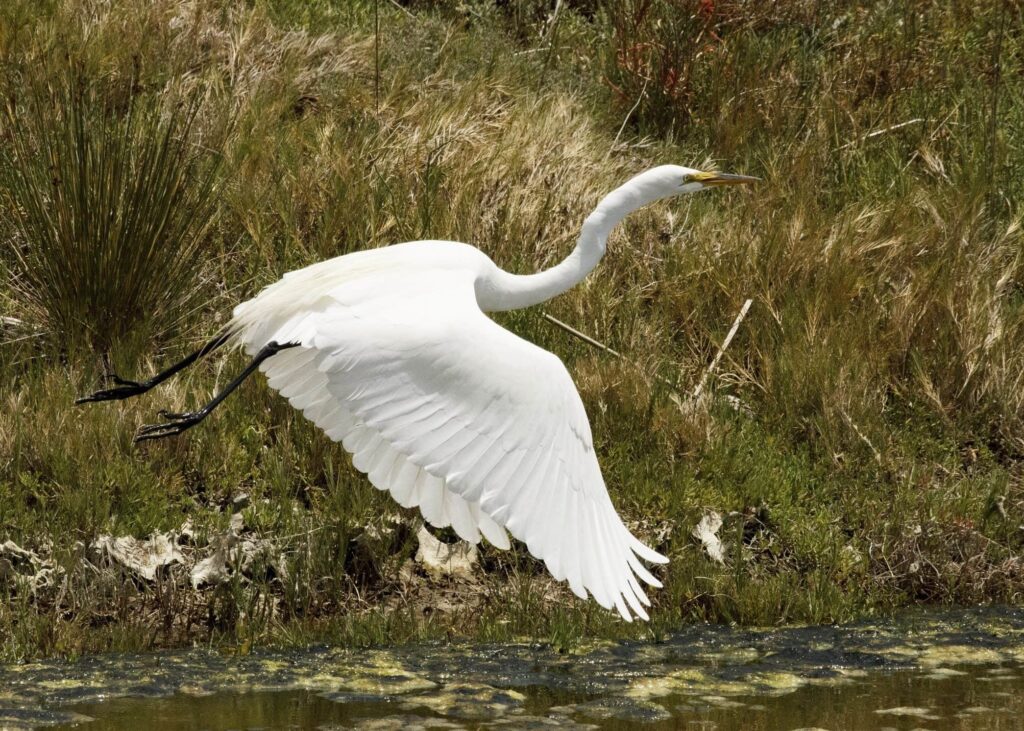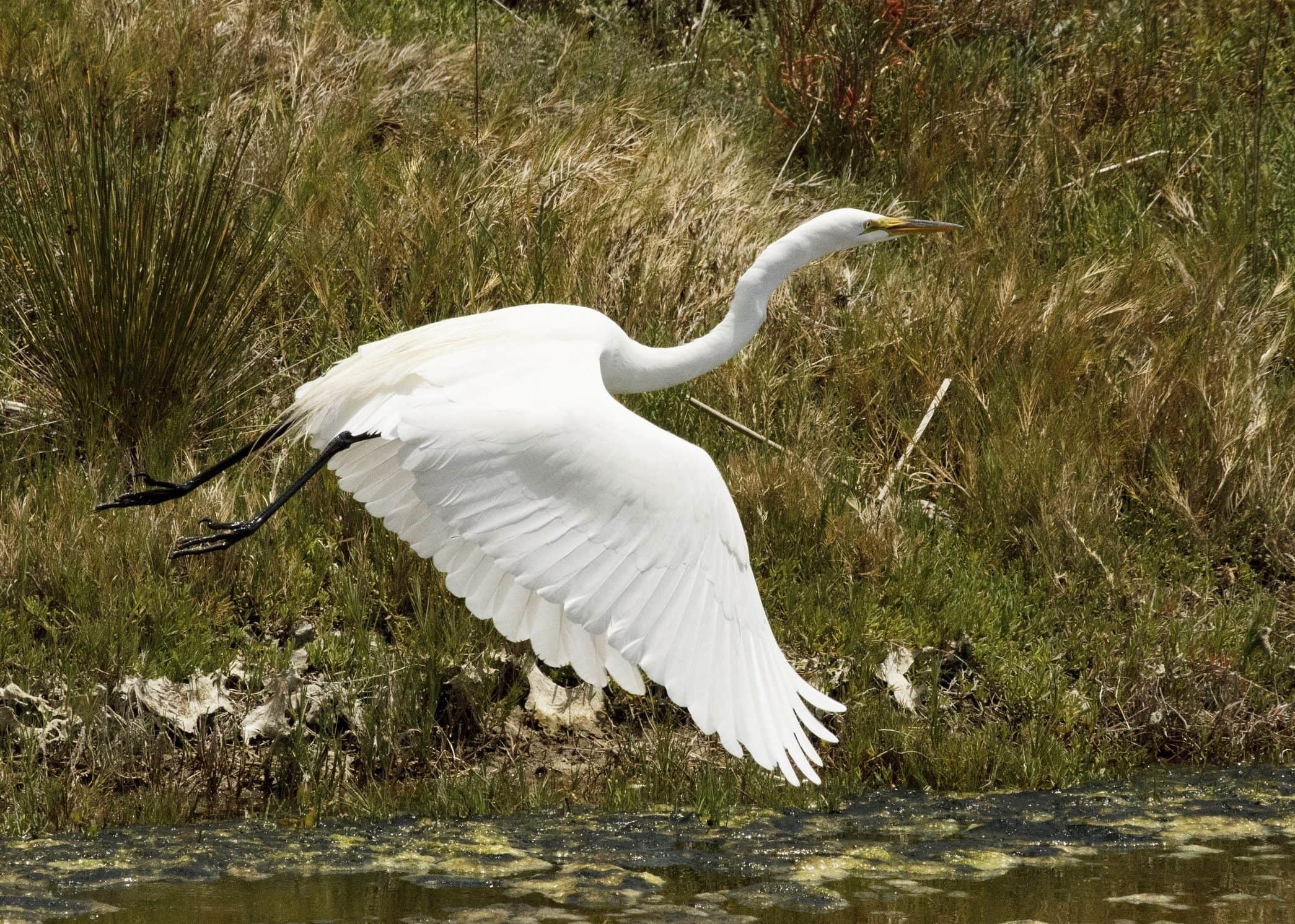ANIMAL: Western Great Egret Ardea alba Type of Animal: Heron Habitat: Wetlands, marshes, ponds, lakes, open lake edges, mudflats, rivers, flooded fields, shores, coastal areas, swamps, mangroves, ricefields, cultivated areas, lagoons, estuaries, trees/shrubs near water, thickets, reedbed areas near large lakes, islands, impoundments, streams, tidal flats, canals, ditches, bogs, upland areas Location(s): In Americas, ranges from S Canada to Tierra Del Fuego (also found in Falkland & Galapagos Islands), also found in Caribbean. Also found in Europe, Asia Minor, Caucasus, C Asia, Middle/Near East areas in N Lebanon, E Syria, Iraq, Iran, SW Afghanistan, & NE UAE, goes as far E as Mongolia, NE China, & far SE Siberia, & also in N Indian subcontinent, China bordering Indian Subcontinent. In Africa, found on N coast & in Sub-Saharan Africa. Also found in Madagascar. Appearance: Large tall white heron, straight long yellow bill, black legs/feet, bill darkens to orange/lower legs lighten in breeding season, long neck, grow long lacy flowing plumes in breeding season Food/Diet: Fish, amphibians, crustaceans, insects, reptiles, birds, small mammals, polychaete worms Status in Wild: Stable Conservation: Monitoring of migration/breeding patterns. Ban on use of plumes in early 1900s, which made populations dangerously low. Lifestyle: Breeding colonies (heronries) can range from 14-4,000 birds. Feeding groups usually number 2-20 birds. Sometimes feed alone. Additional Info: Called: Male: Cock Female: Hen Young: Chick Group: Heronry Weight: Male: 2-3 lbs Female: 1.5-2.3 lbs Gestation: 3.5-4 weeks Life Span: 5-10 years in wild, 15-20 years in captivity Height: Male: 3.4 ft Female: 3.08 ft Body Length: 2.6 ft, same for both sexes Tail Length: 0.3 in, same for both sexes Main predators of adults are crocodilians, felids, otters, bears, raptors, large snakes, canids, & raccoons. Crows, vultures, snapping turtles, & snakes take chicks/juveniles. In late 1800s were hunted to dangerously low numbers due to demand for plumes. Now, worldwide population more than 1 million. Colonies often have multiple wading bird species in them. They’re ambush predators, often standing very still for long periods of time. Females lay 1-6 eggs per clutch & can have 2 broods per year-siblicide very common w/ larger chicks often pecking/stabbing smaller chicks to death. Though common & often seen in wild, they can be shy & are not easily approachable. They have 4.3-4.7 ft wingspan. Males perform most courtship displays, such as wing preening, head ducking, holding/shaking twigs in bill, & neck stretching. Fun Fact(s): Symbol of the National Audubon Society. Sometimes hybridize w/ Eastern Great Egrets in Asia & hybridize w/ Great White/Great Blue Herons in areas where found together. Sometimes, these birds also known as Great White Herons as well as Great White Egret, Large Egret, & Common Egret.

